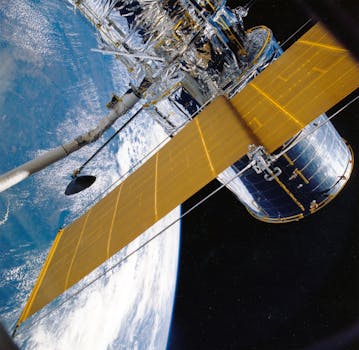GEO Satellites: Introduction to Geostationary Orbit Satellites
GEO satellites, or geostationary orbit satellites, are a type of satellite that orbits the Earth at an altitude of approximately 36,000 kilometers above the equator. At this altitude, the satellite’s orbital period matches the Earth’s rotational period, allowing it to remain stationary relative to a fixed point on the Earth’s surface. This unique characteristic makes GEO satellites ideal for a variety of applications, including telecommunications, navigation, and weather forecasting.
GEO satellites have been in use for several decades, with the first geostationary satellite, Syncom 2, launched in 1963. Since then, hundreds of GEO satellites have been launched, providing a wide range of services to users around the world. In this article, we will explore the technology and applications of GEO satellites, as well as their importance in modern telecommunications and other fields.
The Technology Behind GEO Satellites
GEO satellites are equipped with a range of technologies that enable them to operate effectively in geostationary orbit. These include high-gain antennas, transponders, and propulsion systems. The antennas are used to transmit and receive signals to and from Earth, while the transponders amplify and re-transmit the signals to extend their range. The propulsion systems are used to maintain the satellite’s position and altitude, as well as to perform any necessary maneuvers.
GEO satellites also have to withstand the harsh conditions of space, including extreme temperatures, radiation, and debris. To mitigate these effects, satellites are designed with robust materials and shielding, as well as redundant systems to ensure continuous operation in the event of a failure.
Applications of GEO Satellites
GEO satellites have a wide range of applications, including telecommunications, navigation, weather forecasting, and Earth observation. In telecommunications, GEO satellites are used to provide broadband internet, television broadcasting, and mobile phone services to remote and underserved areas. They are also used for navigation, providing location information and timing signals to GPS receivers on the ground.
In weather forecasting, GEO satellites are used to monitor cloud patterns, storm systems, and other weather phenomena. They provide high-resolution images of the Earth’s surface, allowing meteorologists to track weather patterns and predict future weather events. GEO satellites are also used for Earth observation, providing data on ocean currents, sea level rise, and other environmental factors.
Importance of GEO Satellites in Modern Telecommunications
GEO satellites play a critical role in modern telecommunications, providing connectivity to remote and underserved areas. They are used to extend the reach of fiber optic networks, providing broadband internet and other services to areas where it is not economically viable to lay fiber optic cables. GEO satellites are also used to provide backup connectivity in the event of a fiber optic cable failure, ensuring that critical communications systems remain operational.
In addition to their role in telecommunications, GEO satellites are also used for navigation, weather forecasting, and Earth observation. They provide a unique perspective on the Earth’s surface, allowing scientists to study the planet’s climate, geology, and ecosystems. GEO satellites have also been used for search and rescue operations, providing critical information to emergency responders in the event of a disaster.
Conclusion
In conclusion, GEO satellites are a vital part of modern telecommunications, navigation, and weather forecasting. Their unique characteristics, including their geostationary orbit and high-gain antennas, make them ideal for a wide range of applications. As the demand for connectivity and data continues to grow, the importance of GEO satellites will only continue to increase. Whether used for telecommunications, navigation, or Earth observation, GEO satellites play a critical role in our daily lives, and their impact will be felt for generations to come.
